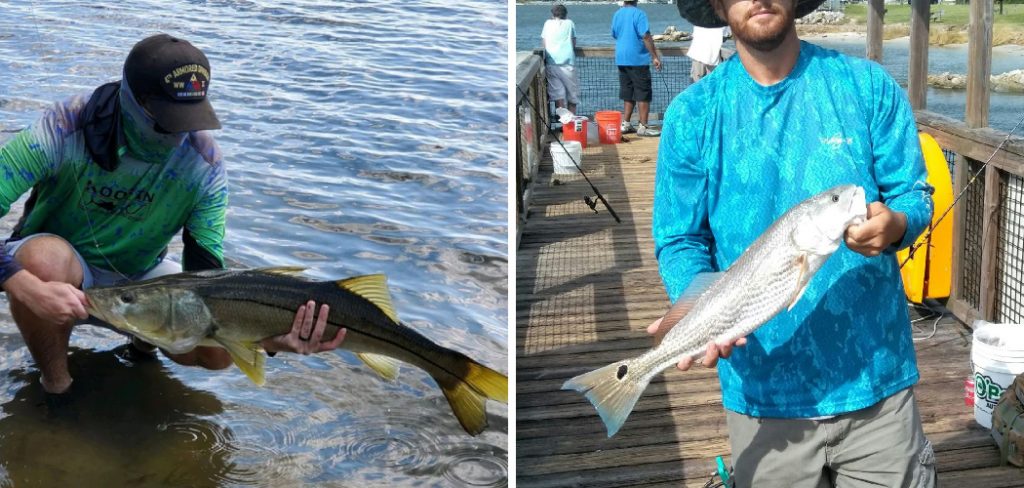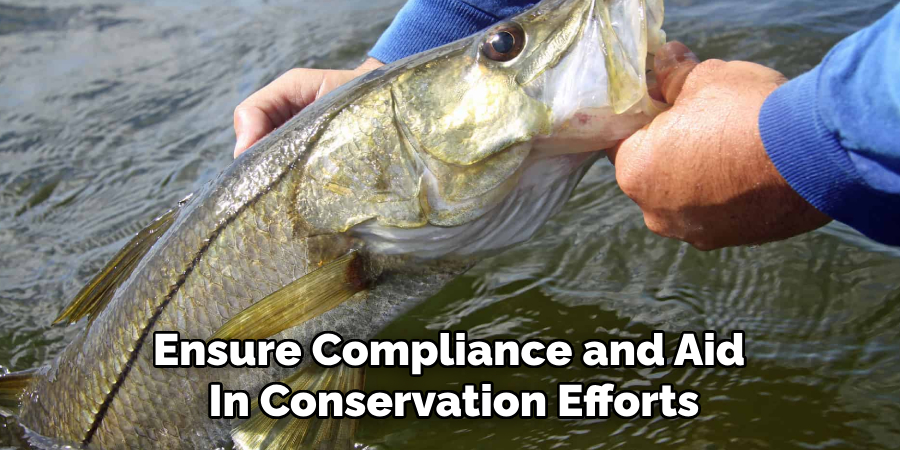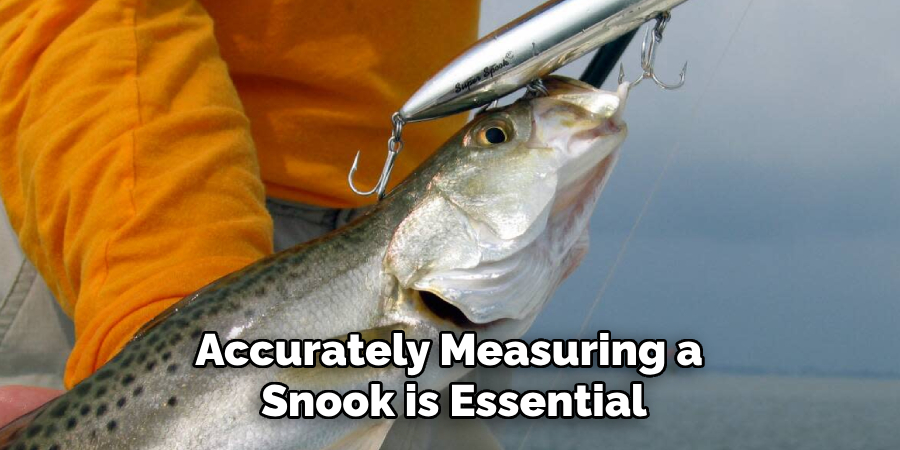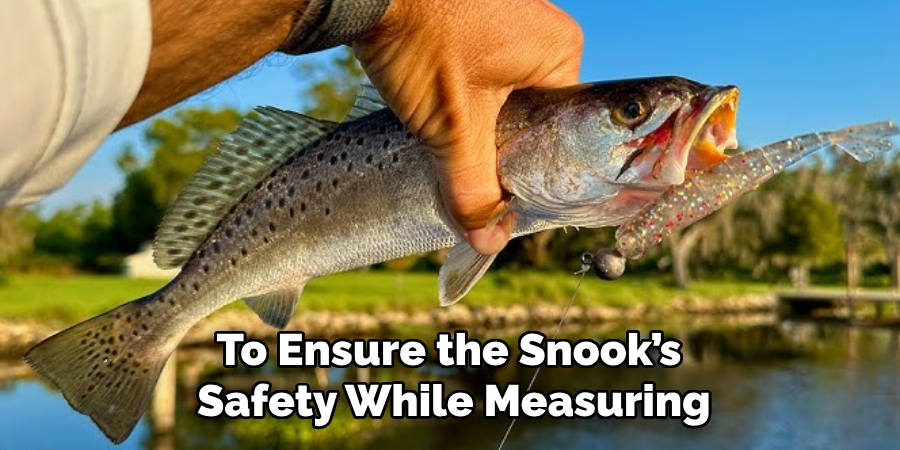Snooks are a sought-after species among anglers due to their challenging fight, impressive size, and delectable taste. These fish are commonly found in warm coastal waters and are known for their distinctive lateral line and sloping forehead. The popularity of snook fishing has led to the implementation of strict regulations to ensure their sustainable management. Proper measurement of snook is crucial for conservation efforts and legal compliance, as size limits are enforced to protect juvenile and breeding populations.

This article aims to provide anglers with detailed steps on how to measure a snook accurately, ensuring adherence to local regulations and contributing to the species’ conservation. By following these guidelines, anglers can enjoy their sport responsibly while helping to preserve snook populations for future generations.
Understanding Measurement Regulations
Properly measuring a snook is crucial for several reasons that contribute to both conservation and legal fishing practices. Accurate measurement ensures that undersized juvenile fish and oversized breeding adults are released back into the water, promoting the sustainability of snook populations. This practice helps maintain healthy ecosystems and supports recreational fishing activities for future generations.
Common regulations for snook measurements often include slot limits and specific size requirements. Slot limits mandate that only fish within a specified size range, usually between a minimum and maximum length, can be legally kept. For instance, a region might have a slot limit that permits keeping snook between 28 and 32 inches. These regulations aim to protect younger, smaller fish and larger, older fish that contribute significantly to reproduction.
Regulations can vary by region, with each state or jurisdiction implementing its own set of rules to address local snook populations and ecological conditions. For example, Florida enforces different size and bag limits in different areas, such as the Atlantic Coast and the Gulf Coast. Anglers must be aware of and adhere to the specific rules in their fishing area to ensure compliance and aid in conservation efforts.

By understanding and following these measurement regulations, anglers play a critical role in the sustainable management of snook populations, supporting both the environment and the fishing community.
Essential Tools for Measuring Snook
Accurately measuring a snook is essential for complying with regulations and supporting conservation efforts. Below are the key tools that anglers can use to measure snook effectively.
Measuring Tape or Ruler
When it comes to measuring snook, a flexible, waterproof measuring tape is an excellent choice due to its durability and ease of use. These tapes can adapt to the fish’s body contours, providing precise measurements even if the fish moves slightly. They are particularly useful in wet environments, ensuring that the tape does not degrade over time. Another option is a sturdy ruler, though it may be less adaptable to the fish’s shape.
Measuring Board
A fish measuring board is another effective tool for gauging a snook’s length. These boards usually come with a built-in ruler and a flat surface where the fish can be placed. The snook is laid along the board, and the length is read from the head to the tail tip. Measuring boards offer the advantage of providing more stable and precise measurements, minimizing the chances of error.
Digital Tools
With advancements in technology, anglers now have access to mobile apps and digital devices designed for measuring fish. These tools can offer quick and accurate measurements by capturing the fish’s image and using built-in algorithms to determine its size. Some apps even provide additional functionalities, such as recording the catch’s GPS location and storing measurement data for future reference. To use these tools effectively, ensure that the fish is laid flat and properly aligned with the device’s guidelines before taking a measurement.

By utilizing these essential tools, anglers can ensure accurate and compliant measurements, contributing to the sustainable management of snook populations.
How to Measure a Snook: Steps for Measuring a Snook
Preparing the Fish
- Handling the Snook Carefully to Avoid Stress and Injury: Proper handling is essential to ensure the snook’s health and well-being. Gently cradle the fish with wet hands or a wet towel to avoid removing its protective slime coat. This reduces stress and minimizes the risk of injury.
- Ensuring the Fish is Lying Flat and Straight: For an accurate measurement, the snook must be placed on a flat, stable surface. Make sure the fish is lying straight with its belly downward, ensuring that its body is not curved or twisted.
Measuring Total Length
- Placing the Snook on a Flat Surface: Securely position the snook on the measuring board or flat surface to obtain an accurate measurement.
- Aligning the Fish’s Snout With the Zero Mark of the Measuring Tool: Place the snook with its snout precisely at the starting edge or zero mark of the measuring tape or board. Ensuring the snout is aligned correctly is crucial for an accurate total length reading.
- Measuring to the Tip of the Tail (Compressing the Tail Fin if Required by Regulations): Measure from the snout to the furthest tip of the tail fin. Some regulations require the tail fin to be compressed to the longest possible length, so check the local guidelines to determine if this step is necessary.
Measuring Fork Length (if required)
- Understanding Fork Length Measurement: Fork length is measured from the snook’s snout to the fork, or indentation, where the tail splits into two lobes. This method is sometimes specified by local regulations.
- Positioning the Measuring Tool at the Snout and Measuring to the Fork of the Tail: Place the zero mark of the measuring tool at the snout and extend the tool to the fork of the tail. Ensure the snook remains straight and flat during this measurement.
Recording the Measurement
- Documenting the Length Accurately: Take note of the measurement by recording the exact length of the snook as indicated by the measuring tool. Precision is essential for adhering to legal regulations.
- Taking a Photo as Evidence (useful for catch-and-release and tournaments): Capture a clear, well-aligned photo of the snook on the measuring tool. This serves as proof of measurement, which can be useful for catch-and-release programs or fishing tournaments. Make sure the photo displays the entire fish and the measuring marks clearly.

By following these steps, anglers can measure snook accurately and responsibly, aiding in conservation efforts and ensuring compliance with fishing regulations.
Tips for Accurate Measurement
Ensuring Proper Handling
- Minimizing Handling Time to Reduce Stress on the Fish: To ensure the well-being of the snook, minimize the time spent handling it. Quickly and efficiently perform measurements to reduce the stress and potential harm to the fish.
- Using Wet Hands or Gloves to Protect the Fish’s Slime Coat: Always handle the snook with wet hands or wet gloves. This practice helps preserve the fish’s protective slime coat, which is crucial for preventing infections and maintaining overall health.
Measuring on a Stable Surface
- Choosing a Flat, Stable Surface for Measurement: When measuring the snook, opt for a flat, stable surface. A steady platform ensures the fish remains immobile, allowing for more accurate and precise measurements.
- Avoiding Measurements in Rough or Unsteady Conditions: Conduct measurements in calm settings. Do not attempt to measure the fish in rough waters or on unsteady grounds, as this can lead to inaccuracies and increase the fish’s stress.
Double-Checking Measurements
- Verifying the Measurement by Checking Twice: Always double-check the initial measurement to ensure accuracy. A second verification helps to catch any errors or misalignments that may have occurred during the first attempt.
- Having a Partner Assist to Ensure Accuracy: If possible, have a partner assist with the measuring process. A second set of eyes can help confirm that the fish is properly aligned and that the measurement is precise, reducing the likelihood of mistakes.
Frequently Asked Questions (FAQs)
1. What Is the Best Tool for Measuring a Snook?
A measuring board or ruler specifically designed for fishing is the best tool for measuring a snook. These tools are often marked with clear, precise measurements that help ensure accuracy. Digital tools, such as mobile apps, can also be effective, but following the app’s guidelines closely is crucial.
2. Do I Need to Compress the Snook’s Tail Fin when Measuring?
Whether you need to compress the snook’s tail fin depends on local fishing regulations. Some guidelines require the tail fin to be pinched to the longest possible length for accuracy. Always check the specific rules for the area where you are fishing to ensure compliance.

3. How Can I Ensure the Snook’s Safety While Measuring?
To ensure the snook’s safety while measuring, handle the fish with wet hands or gloves to protect its slime coat. Lay the snook flat on a stable, wet surface, like a measuring board, to minimize stress and injury. Additionally, perform the measurement quickly to reduce handling time.
4. Why Should I Take a Photo of The Measured Fish?
Taking a photo of the measured fish serves as proof of measurement, which can be very useful for catch-and-release programs or fishing tournaments. The photo should clearly display the snook aligned with the measuring tool’s marks, showing the entire length and ensuring transparency and compliance with regulations.
Conclusion
Accurate snook measurement is crucial not just for compliance with fishing regulations but also for the sustainability of fish populations. By practicing proper measurement techniques, anglers contribute to responsible fishery management, ensuring the longevity of snook species for future generations. It’s essential to handle the fish carefully, use reliable tools, and follow local guidelines on how to measure a snook to ensure precision and minimize stress on the fish.
Remember, responsible and sustainable fishing practices begin with individual actions. Whether you are a seasoned angler or a novice, making a conscious effort to measure your catch accurately will promote the health of aquatic ecosystems. By applying these techniques, you help foster a culture of awareness and conservation within the angling community.
About the Author
Jennifer Branett is the author of Fishy Kayak and an expert in fish-related fields, with over 10 years of experience. Her work blends passion for fishing with a commitment to conservation.
Educational Background
Degree: Bachelor’s in Marine Biology
Institution: University of California, Santa Barbara
Specializations: Aquatic ecosystems, fish behavior, and sustainable practices
Professional Experience
Conservation Projects:
Collaborated with local organizations to restore aquatic habitats
Developed educational programs on sustainable fishing practices
Publications:
Authored articles for fishing magazines and environmental journals
Featured speaker at fishing expos and conservation conferences
Key Areas of Expertise
Fishing Techniques:
Kayak fishing strategies
Freshwater and saltwater fishing methods
Environmental Stewardship:
Advocacy for sustainable fishing
Promoting biodiversity in aquatic environments
Awards and Recognition
Recipient of the [Specific Award Name] for contributions to marine conservation
Recognized as a leading voice in the fishing community by [Organization/Publication Name]
Community Engagement
Workshops and Seminars:
Regularly hosts events to educate anglers on sustainable practices
Engages with youth programs to inspire the next generation of fishers
Online Presence:
Maintains an active blog sharing tips, stories, and conservation efforts
Engages with followers on social media to promote fishing ethics
Personal Interests
Enjoys kayaking in scenic locations
Passionate about photography, capturing the beauty of nature
Advocates for local conservation efforts in her community
